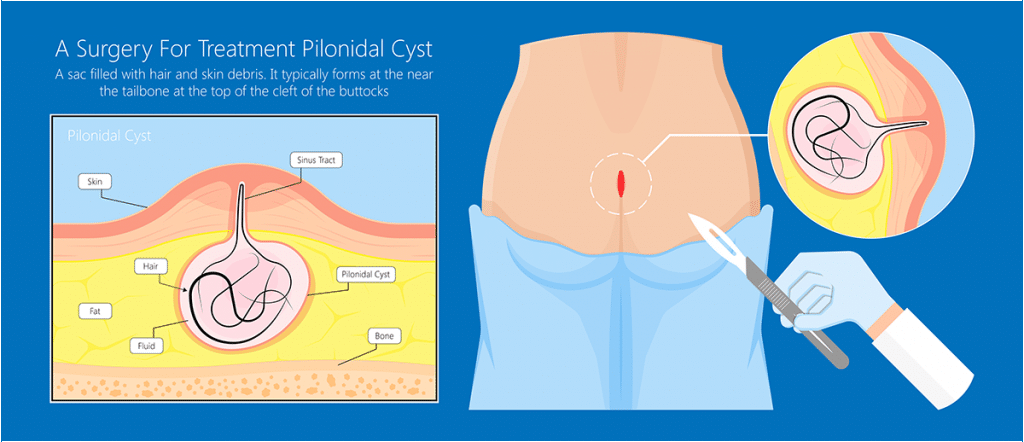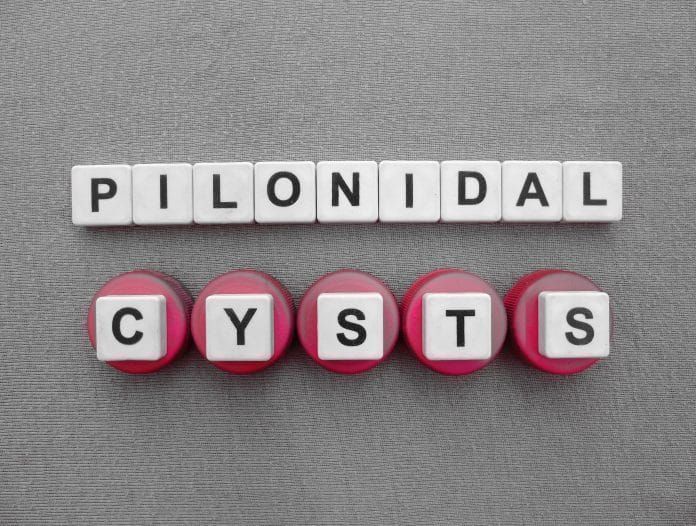A pilonidal cyst: it is a’is what and how to treat it ?
Pilonidal cyst is a disease characterized by the more or less sudden appearance of a cyst in the intergluteal groove. If it is often imperceptible and painless, it can be very painful in case of inflammation.
Qu’is it’a pilonidal cyst ?
A pilonidal cyst from Latin pilo refers to the hair and nodal the nest, also called sacro coccygeal cyst is a subcutaneous cyst. The pilonidal cyst is a benign skin disease that usually develops in the gluteal cleft, at the top of the buttocks, along the coccyx or pilonidal sinus. It is a small closed pouch with a distinct membrane.
The cyst takes the form of a small ball on the skin which can go unnoticed, but which becomes painful, red and hot if it becomes inflamed. The mass can also occur at the umbilical or more rarely in the interdigital space.
The abscess is, most of the time, due to a pile of hair, sebum and skin debris in the epidermis. If the pilodinal cyst is not very inflammatory, it does not cause any particular discomfort. However, if it gives rise to an infection, it can be very painful and lead to complications.
The symptoms of the cyst are the appearance of small dimples at the level of the pilonidal sinus which give rise to the proliferation of bacteriological germs creating abscesses, around hairs, from which pus or blood can flow out. The pilonidal cyst is very painful and can be very disabling; it often prevents the patient from sitting or lying down. Even after treatment with an incision to drain the pus contained in the pocket or after total removal of the cyst, there are unfortunately frequent cases of recurrence.

What causes ?
Pilonidal cyst is a rare disorder. It mainly affects young adults between the ages of 16 and 35, especially men. Patients with a pilonidal cyst represent only 1% of the male population and about 0.1% of the female population.
The causes of this skin infection can be diverse. It occurs in particular in people suffering from obesity, but it can also be due to a prolonged sedentary position, rubbing of clothes, shaggy hair, oily skin or be congenital, i.e. related to a family predisposition.
It also happens that the pilodinal cyst is a disorder of professional origin, this is the case for some hairdressers in whom we see the appearance of an interdigital cyst. This disease has long been considered the consequence of a lack of hygiene, we now know that this is false and that hygiene is not a cause of the appearance of the cyst.
How to treat a pilonidal cyst ?
There are different methods for treating a pilonidal cyst. The most common method is the classic operation. However, the most appropriate treatment is to be determined, according to your case, following a clinical diagnosis.
Classic operation
When inflammation is confirmed, emergency surgery can be performed. It is a risk-free incision that allows for drainage. However, the operation can also be scheduled to anticipate a possible inflammation. In this case, the surgeon removes the entire cyst. It is a surgical resection.
Although the intervention is local, its position makes the healing of the area particularly long, which can go from several weeks to several months. Good healing requires nursing care, especially to change the absorbent dressing.
Laser surgery
A laser intervention is now possible for this type of infection. During this procedure, the surgeon uses a probe equipped with a laser to burn the cyst wall the wall of the cyst. This method is more and more appreciated by patients, because it is less painful and leaves a superficial wound allowing a faster healing. However, laser treatment does not prevent recurrence
Natural treatment
In order to relieve the inflammation, you can also turn to alternative medicine. You can opt for aromatherapy. In fact, certain anti-inflammatory and antibacterial essential oils help to avoid superinfection.
You can also turn to naturopathy or homeopathy. However, these treatments are often prescribed as a complement to medical care and cannot replace a consultation with a doctor.
